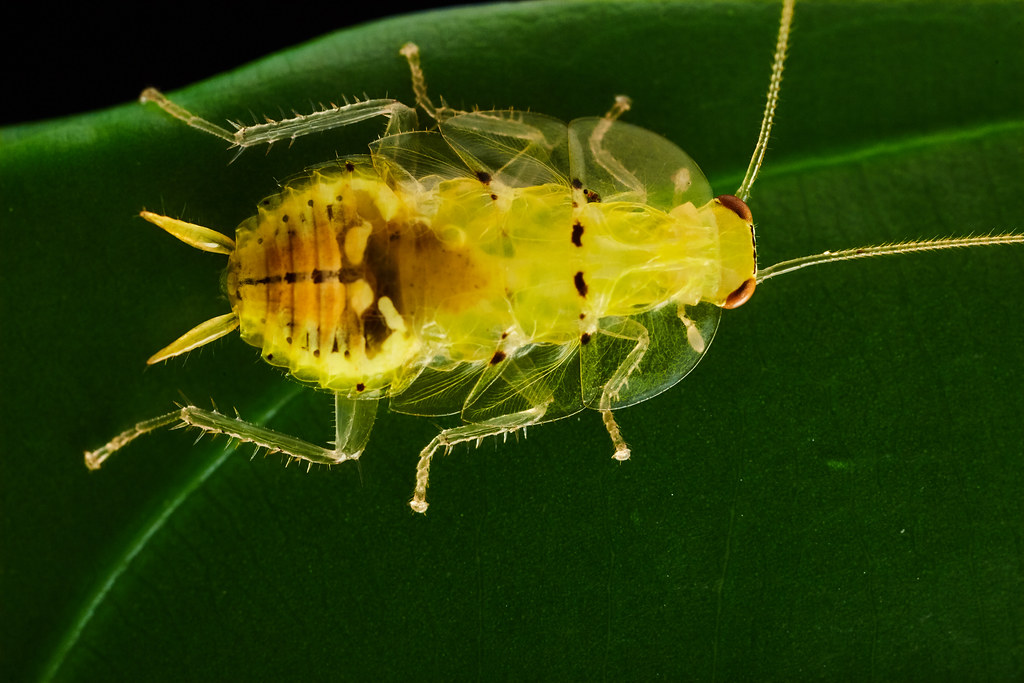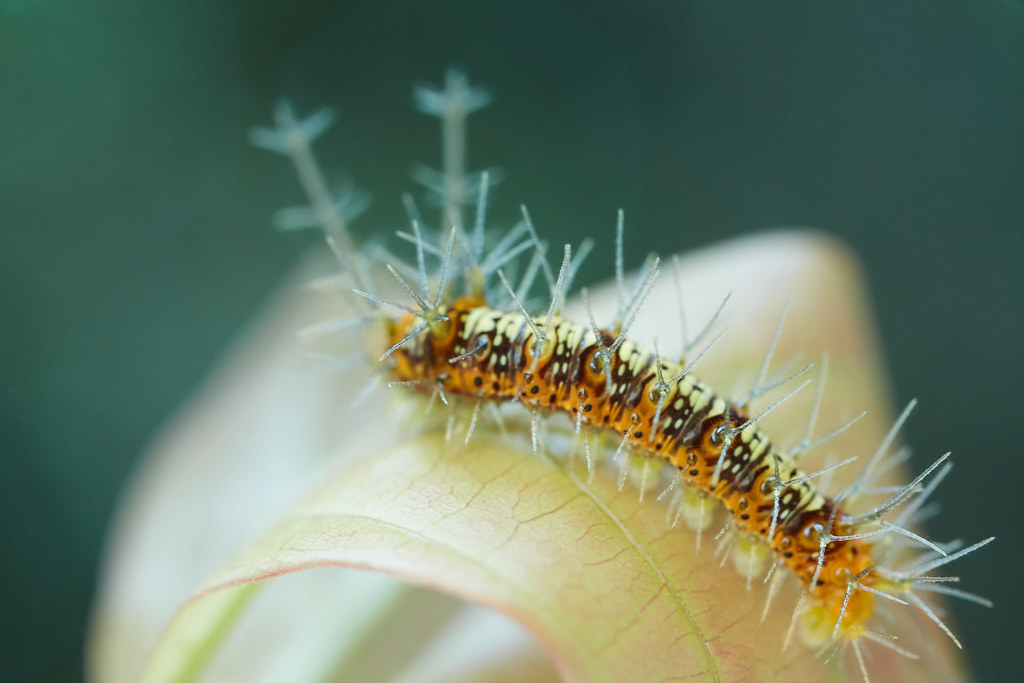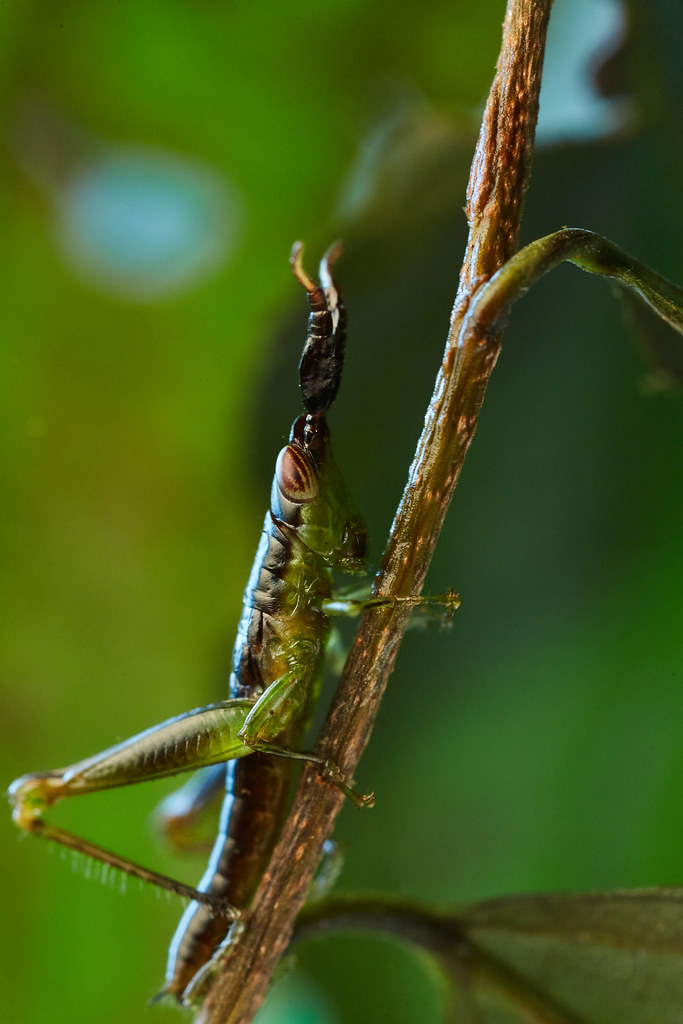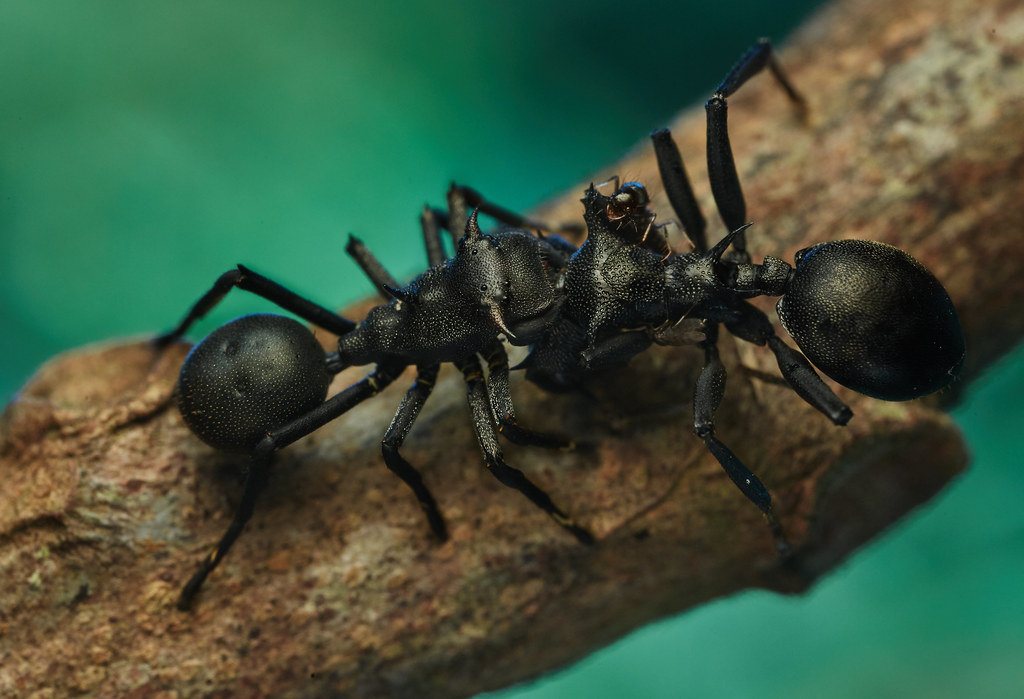bladesofgrass
Offline
• • •
Upload & Sell: Off
|
Yellow glass cockroach (Chorisoneura):
The glass frogs are a thing of beauty. To see a beating heart, the movement of the internal organs, it is a laboratory dissection without the blood and without the fainting of one's classmates. There is awe and fascination and they rightly deserve a place in nature's pantheon of incredible creatures.
And the glass cockroach? "The what now?" Oh why have you faded into obscurity? Equally fascinating. Equally beautiful. A marvel of nature. You are so amazing in fact that you deserve your own hashtag... see more #CockroachesofSani (It sounds bad, I know. But continuity across groups and all).

A beetle-mimicking cockroach the size of a pinhead races across a fallen leaf.
I stop what I am doing. I drop the leaf with the jumping spider, $hi!%$ just got real! I creep slowly through the undergrowth, vines and leaves snagging at my clothes and camera. It's not a cockroach I quickly realize, it's a bullet! It races from leaf to leaf and how something so small can move so fast is beyond me. A litany of curses escape my lips (which my protege and understudy is hurriedly scribbling down, these opportunities for such great English lessons don't come around every day!). I feel the heat and the humidity, the leaves are a moist and putrid caress and I shudder inwardly as they plant their wet kisses on my cheek. The sun arcs through the sky, hours pass. This little cockroach, flitting about, it will break me! My guide has already succumbed, he is nursing a headache in the shade. If it could just...STOP. "Oh my God, it's stopped!!!" I bring up the camera, and fire off a quick round of shots. I eagerly glance at the display. All black. The flash isn't on...of course! My moment has passed, the cockroach, the roadrunner is speeding along once more. I am ready to bow my head in defeat when it stops again. Cheekily or charitably, I'm not sure which one, it turns its head in my direction and grooms an antenna for a brief moment. Enough to get a few shots WITH flash, before it is off again.
The cockroaches are sometimes the most surprising rainforest residents you can come across. They are beautiful, they are deceptive, colourful and god they are FAST! See more #CockroachesofSani.

Amongst all the amazing avifauna that they have here in the Amazon, you wouldn't necessarily think that a duck would place too high in the beauty pageant. And yet, Sani surprises with the Moscovy duck. Beautiful iridescent plumage and crest draw birders. See more amazing #birdsofSani.

Beauty in the understory:

Aposematism, mimicry and camouflage, these are the primary strategies of the butterflies and moths. Very effective, and hugely successful. But the caterpillars...an insight into the twisted and fantastical. A phantasmagorical world where nothing is as it seems. They are a laboratory of experimentation with shapes, patterns, colours and behaviours which defy the imagination, and challenge our sense of logic. Physical defences in the form of urticating barbs, spines and hairs. Chemical defences, distasteful chemical compounds, either aromatic or else a part of their very bodies. Poisons. Aposematic colours; reds, yellows, purples, blues. Cryptic patterns and camouflage, mimicry of snakes, and ants and other flora and fauna. The strategies are seemingly endless and here at #Sanilodge, there is always something new around the corner. See more #caterpillarofSani.

A pet peeve of mine is anthropomorphizing animals and attributing to them human emotions, sentiments and values. Not only is this very anthropocentric and narrow minded, it also cheapens the rich, amazing evolutionary journey these animals have trekked to get to their present form. So when my guide/understudy, a young, local Kichwa took me aback by saying that this grasshopper looked like Angelina Jolie's Maleficent, I felt the need to sit him down and give him a stern talking to. "You do realize that that movie only got 50% on rotten tomatoes, it's just your standard hollywood...I mean, the grasshopper's antennae have evolved over evolutionary time to appear as they do. Sometimes the odd shape is to disrupt a predator's search image, other times they serve a specific function, beyond the traditional sensory role. It is only through observation, study, and a rigorous application of the scientific method that we can tease out each animal's complicated story. And if you want to see a real movie, then go see Citizen Kane!" - I finished at nearly fever pitch, slightly traumatizing him.

Yellow and black, a strident warning to potential predators of toxicity and unpalatability. Yet how did this come to be? How do you get from caterpillar to toxic beauty?
'De novo' (from new) biosynthesis of toxins is a possibility, though more common, and potentially less work, is bioaccumulation or biological magnification. This strategy involves a caterpillar usually adapted to a host plant, feeding, sequestering, concentrating, and perhaps slightly modifying biochemical constituents in the plant's sap. These toxic compounds provide a degree of safety as animals come to learn and associate them with colors and patterns like those seen here.
Excellent strategy, no? But that's not the entire story. This toxic lifestyle is not without its cost. Sequestration and modification of these biochemical compounds requires the right tools for the job, whether that be specialty enzymes or specific cells or organs to hold this hazardous soup and prevent poisoning oneself. This adaptation while obviously beneficial can slow growth and development, allowing faster growing competitors the opportunity to outcompete. Moreover, an organism's evolution doesn't happen in a vacuum. The plants meanwhile are modifying their biochemical constitution in the 'hopes' of ridding themselves of these essentially parasitic caterpillars and the predators are evolving means of detoxifying themselves and putting yellow and black butterflies back on the menu.
It is a rich, complex world, the deeper you go, the more you risk losing yourself in it altogether. S more ee more #butterfliesofSani.

The pygmy kingfisher, the smallest of #Sanilodge's kingfishers, is almost all beak. And a very special beak it is too, perfectly adapted to its fishing lifestyle. The pointed beak slices the water, and creates very little vibration or displacement of water which would otherwise alert and scatter fish. It can either pierce, or catch its prey which it will then proceed to bludgeon into submission against its perch. Beaks are living things, made up of keratin, like our skin and nails, and hardens as it condenses into a formidable tool and weapon. See more amazing #birdsofSani.

The development of mimicry has got to be one of the most fascinating topics in evolutionary biology. The complex interrelationship between species which has come to be reflected in each players' very DNA and further enhanced by behavioural adaptation which has come to echo that of their model organism, oftentimes with stunning and frightful accuracy. Co-evolution, the so-called evolutionary arms race of one-upsmanship between models and mimics. This is natural history drama sewn into the fabric of this tremendous ecosystem, with new threads being woven daily.
Let's follow one such thread. It leads up and into the rainforest mid-story, and to a small colony of ants. Unassuming, if slightly oddly shaped, the turtle or gliding ants (Cephalotes sp.). Of course these ants have their own rich biological history and heritage. But the thread we are following leads further. In fact, it twines itself around these ants, strangling them. It has become inextricably linked. It is the story of Aphantochilus rogersi, the gliding ant-mimicking crab spider. Perhaps one of the very finest of mimics, it's likeness is awe-inspiring. Most mimics have evolved this habitus, this way of life of mimicry, as a means of protection through verisimilitude with a toxic, or aggressive model. Defensive mimicry in other words. This is not that! Aphantochilus is not content to simply take advantage of the 'herd immunity' provided by a semblance to the gliding ant, it also preys on its model. This is offensive mimicry, is less common, and more complex. Feeding on its model requires constant proximity to the source, the nest. This puts Aphantochilus at greater risk. However, its deception is not just chitin-deep, it has changed its behaviour as well. How it feeds. Most crab spiders will grab prey, usually pollinators (since most are ambush predators around flowers and nectar sources). Aphantochilus must grab one ant out of a colony of thousands, without drawing attention to itself, without raising an alarm. It does so by grabbing ants after they have left the nest and they are more isolated and vulnerable. After delivering the fatal bite, they hold their ant prey close. They are feeding, but they also appear as two ants engaged in trophollaxis (food/biochemical liquid exchange) or else an ant carrying a dead companion.
This rainforest ecosystem is a tapestry of millions of these threads. It is naive to think that cutting one will not affect the rest. The degree of interconnectedness is so bafflingly complex that don't be surprised if that lowly fungus that disappears today, and that no one thought twice about, leads to fewer Jaguars tomorrow and we're all left scratching our heads wondering how this came to be...Protect and cherish the RAINFOREST, not just a few flagship and charismatic species that call it home.
Oh, you thought we were done did you? Complexity. Look again at the image, what do you see? Peaking over the ant's dead carcass is a predaceous beetle. It has not killed this ant, but it is all too happy to reap some of the rewards of the fresh kill. Whether it is actually a kleptoparasite or just an opportunist is a question for another day, the beetle is simply happy to take advantage of this bounty and good fortune.
See more amazing #spidersofSani.

Thanks for looking and commenting and if you'd like to follow the project, you can do so here: https://www.facebook.com/paul.bertner
Paul Bertner
|


